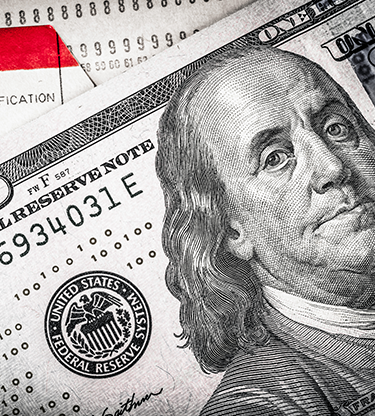Daily Brief

US data up, dollar down
3 minute readAn American tale
Over the Easter weekend the news was all about the United States. It was good for equities, with the S&P 500 index closing at a record high on Monday, however this was of no help to the US dollar, which was the weakest performer over the four days with an average loss of 0.7%.
Even ahead of the weekend the US dollar was putting in the work, with manufacturing sector purchasing managers’ indices of 59.1 from Markit and 64.7 from ISM. The Markit reading was the second highest on record, a millimetre behind January’s 59.2. Because America does not officially do Easter, the data continued to flow on Friday and Monday. Friday’s fix came with the Employment Report, which showed nonfarm payroll employment rising by 916k in March and unemployment falling to 6%. The payrolls number smashed expectations. There was also a positive aspect to the slowdown in average wage growth from 5.2% to 4.2%: the change implies that lower-paid workers are returning to work. Monday’s services PMIs were even punchier than the manufacturing readings with Markit at 60.4 and ISM at 63.7, a record high.
Traditionally, such numbers taken together would be unambiguously positive for the currency. At the weekend, with investors professing to care more about vaccinations than statistics, they were seen more as a reason to embrace risk than to stock up with dollars. The USD is behaving more like a safe-haven than a barometer of the US economy.
And sterling came too
Although the strong US data were of particular help to the supposedly risky Australian and New Zealand dollars, the pound had a good run too, strengthening by an average of 0.3% from Thursday morning to today’s opening. It added a third of a euro cent and almost one and a half US cents.
There was only one UK ecostat, Thursday’s manufacturing PMI, but it was a respectable 58.9; a 10-year high, with business optimism at a seven-year high. The pound began today on the front foot too, assisted by the prime minister’s confirmation yesterday that “Life will start returning to ‘some semblance of normality’ in June”.
The European manufacturing PMIs on Thursday all came in comfortably above the breakeven line at 50. Sweden clocked a 63.7 and Switzerland a 66.3, close to a record high. Results from the Eurozone ranged from Greece’s 51.8 to Germany’s 66.6, a record high.
RBA sticks
As expected, the Reserve Bank of Australia left monetary policy unchanged this morning. In its statement the central bank reiterated the pledge that it “will not increase the cash rate until actual inflation is sustainably within the 2 to 3 per cent target range”.
The Aussie edged higher after the announcement, because there had been a suspicion that the RBA might finesse its bond purchase programme to signal an even longer period of ultra-low interest rates. The AUD took second place for the long weekend, behind the NZ dollar.
There are not many ecostats on today’s list, and no scheduled central banker appearances. The Eurozone numbers cover investor confidence and unemployment. Tonight the services PMI catch-up starts with Australia.
Weekly roundup



